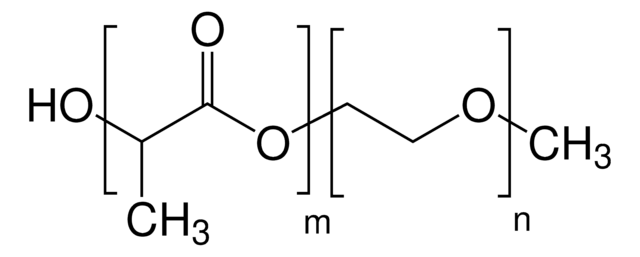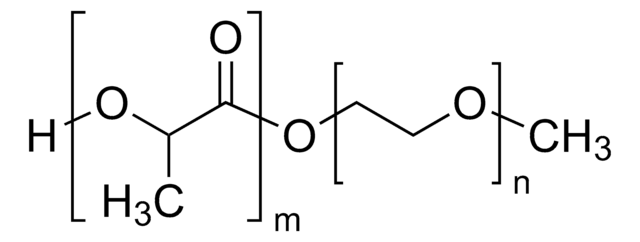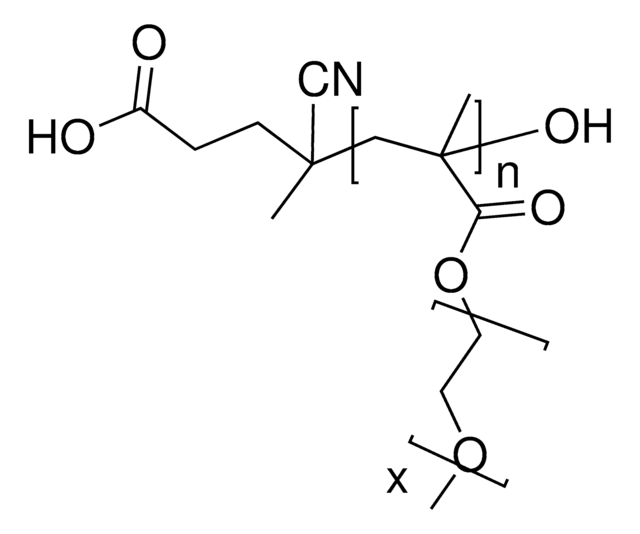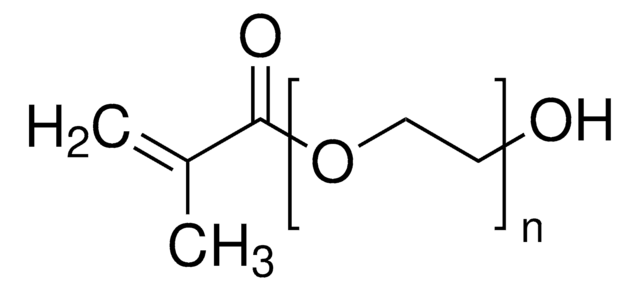918962
Poly(ethylene glycol) methyl ether-block-poly(D,L lactide)
PEG average Mn 5000, PDLA average Mn 50000
Synonym(s):
Biodegradable, Block copolymer, Drug delivery, PEG-PLA, PLLA, mPEG-PLA, mPEG-PLLA
Sign Into View Organizational & Contract Pricing
All Photos(1)
About This Item
Linear Formula:
HO[CH(CH3)COO]m[CH2CH2O]nCH3
UNSPSC Code:
12352106
NACRES:
NA.23
Recommended Products
form
solid
Quality Level
mol wt
PDLA average Mn 50,000 (by NMR)
PDLA average Mn 50000
PEG average Mn 5,000 (by NMR)
PEG average Mn 5000
color
white to yellow
storage temp.
2-8°C
Looking for similar products? Visit Product Comparison Guide
Related Categories
Application
Poly(ethylene glycol) methyl ether-block-poly(D,L lactide) is an amphiphilic, diblock copolymer composed of a hydrophilic PEG block and a hydrophobic PLA block. These biodegradable, biocompatible polymers can self-assemble to form nanoparticles, such as micelles and polymersomes, in both aqueous and non-aqueous media. Due to these properties, these polymers are widely used in polymeric nanoparticle formulation to achieve controlled and targeted delivery of therapeutic agents (e.g. APIs, genetic material, peptides, vaccines, and antibiotics).
wgk_germany
WGK 3
Certificates of Analysis (COA)
Search for Certificates of Analysis (COA) by entering the products Lot/Batch Number. Lot and Batch Numbers can be found on a product’s label following the words ‘Lot’ or ‘Batch’.
Already Own This Product?
Find documentation for the products that you have recently purchased in the Document Library.
Cynthia Griggins et al.
HEC forum : an interdisciplinary journal on hospitals' ethical and legal issues, 23(1), 43-56 (2010-12-21)
This essay describes and critically evaluates a co-operative educational program to train Ugandan health care workers in bioethics. It describes one "bottom-up" effort, a week-long intensive workshop in bioethics provided by the authors to health care professionals in a developing
R Gref et al.
Science (New York, N.Y.), 263(5153), 1600-1603 (1994-03-18)
Injectable nanoparticulate carriers have important potential applications such as site-specific drug delivery or medical imaging. Conventional carriers, however, cannot generally be used because they are eliminated by the reticulo-endothelial system within seconds or minutes after intravenous injection. To address these
Our team of scientists has experience in all areas of research including Life Science, Material Science, Chemical Synthesis, Chromatography, Analytical and many others.
Contact Technical Service






